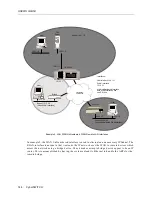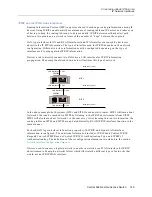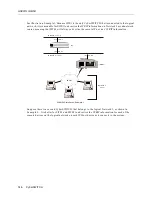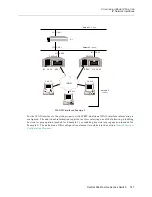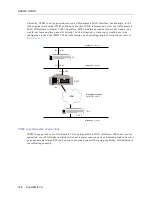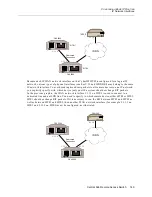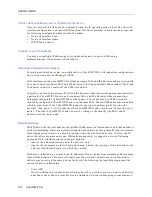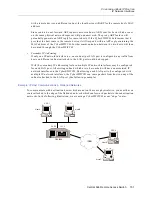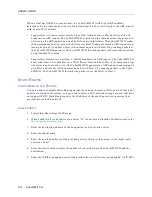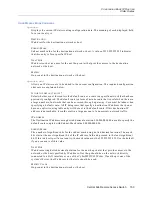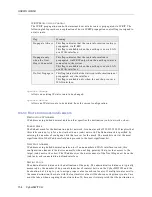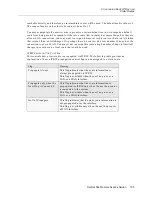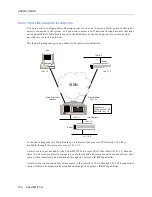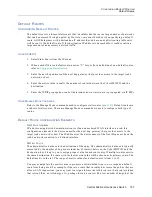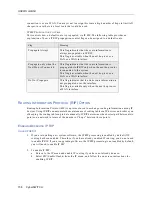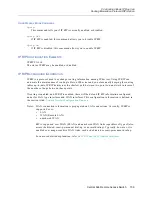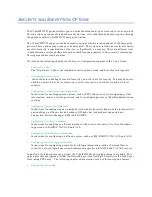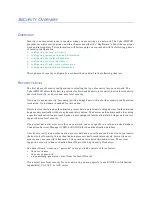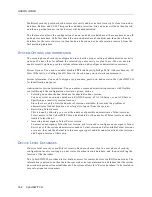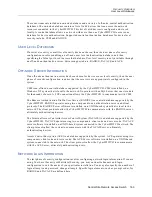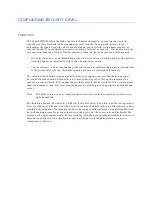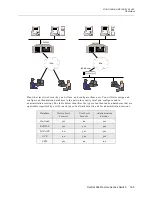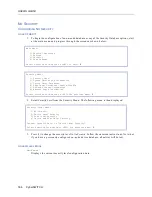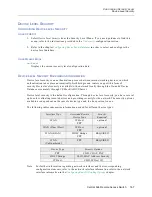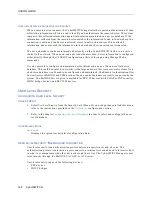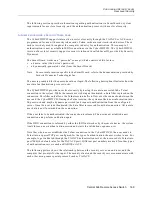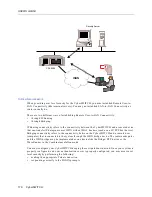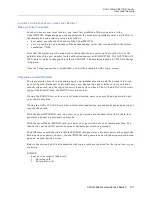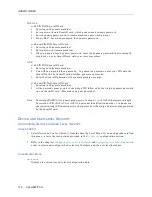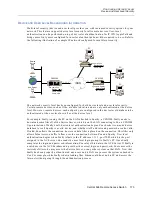
USER’S GUIDE
158 CyberSWITCH
connection is over a WAN. You may want to assign this route a high number of hops to limit toll
charges, in case there is a local route that could be used.
IP RIP P
ROPAGATION
C
ONTROL
This controls how a default route is propagated via IP RIP. The following table provides an
explanation of how a IP RIP propagation control flag can be assigned to a default route.
R
OUTING
I
NFORMATION
P
ROTOCOL
(RIP) O
PTION
Routing Information Protocol (RIP) is a protocol used to exchange routing information among IP
devices. Using IP RIP can automate the maintenance of routing tables on IP devices and relieve you
of keeping the routing tables up to date manually. IP RIP determines the shortest path between two
points on a network in terms of the number of “hops” between those points.
E
NABLING
/D
ISABLING
IP RIP
U
SING
CFGEDIT
1.
If you are installing new system software, the IP RIP processing is enabled by default if IP
routing has been enabled. Therefore, if you have already enabled IP routing, you do not need
to enable IP RIP. If you are upgrading software, the IP RIP processing is not enabled by default;
you will need to enable IP RIP.
2.
To enable IP RIP:
a.
Return to the IP menu and enable IP routing if you have not already done so.
b.
Select RIP (Enable/Disable) from the IP menu, and follow the on-screen instructions for
enabling IP RIP.
Flag
Meaning
Propagate Always
This flag indicates that the route information is
always propagated via IP RIP.
This flag is available when the next hop is over a
LAN or a WAN interface.
Propagate only when the
Next Hop is Connected
This flag indicates that the route information is
propagated via IP RIP only when the next hop router
is connected to the system.
This flag is available when the next hop is over a
LAN or a WAN interface.
Do Not Propagate
This flag indicates that the static route information is
not propagated over the interface.
This flag is available only when the next hop is over
a WAN interface.

